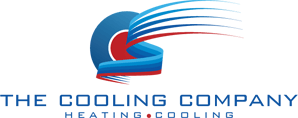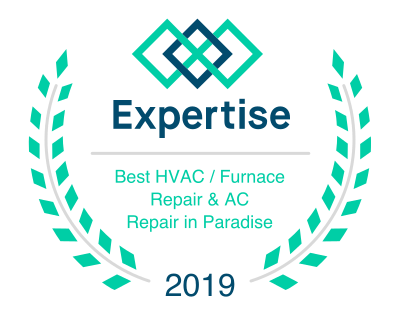In the bustling vicinity of Las Vegas, your HVAC system, including essentials like your heater, gets quite a rigorous workout each summer. Having a reliable way of cooling down, such as a humming AC unit, becomes an absolute necessity. Once the pleasant spring temperatures yield to intense triple-digit scorchers, your diligent HVAC kicks into overdrive, striving to keep your family comfortable.
Indeed, your system works as tirelessly as a gym enthusiast, only in this scenario, you’re the one shouldering the additional expense and burden of dealing with troubleshooting issues, asking necessary questions, and keeping it running so you don’t “feel the burn” (or in this case, the heat). This increased demand often warrants scheduling professional HVAC maintenance services, regular check-ups, and warranty-covered tasks to prevent potential breakdowns, troubleshoot possible issues, and complete vital upgrades.
According to Energy Star, HVAC systems account for an estimated 43% of residential energy use. In the torrid Southwest, where the summer heat could have inspired Dante’s Inferno, the consumption may shoot even higher. This is why it is necessary to keep the various parts of the system in check. Therefore, ensuring the lifespan of your system via regular diagnostics, benefit-loaded plans, warrant-backed repairs, and efficient use of HVAC maintenance tasks is crucial.
For your residential HVAC system to rise to this challenging task, regular maintenance is a non-negotiable necessity. The silver lining? Increased maintenance costs don’t have to burn a hole in your budget. Through a savvy combination of strategic planning and smart purchasing, you can keep your system in prime condition and even lower your energy bill in the process. One way to keep track of all this is by using an app that monitors energy consumption, which can help you manage the amount of energy your HVAC system uses.
Let’s illuminate this path for you!
Keep indoor vents open
Many individuals close indoor vents as a money-saving strategy, under the misbelief that this reduces the burden on their HVAC system. The reality, however, is that closing these vents limits air circulation, heightening pressure on your HVAC system’s electronically commutated motor blower, or ECM. This continued strain ultimately wears down the motor, diminishing the system’s energy-efficiency. So, seasonal preventive maintenance and professional analysis of your system’s performance via HVAC maintenance services are warranted to avoid costly breakdowns and to answer any questions about the system’s health.
Other challenges may include:
- Your home can take longer to cool down or warm up
- Increased duct leakage, which is bad news when the average home loses 20 to 30% of its conditioned air due to duct leaks.
Keep your windows closed
While the idea of letting some fresh air in may tempt you, it is wise to resist this urge on particularly hot days. Reason being, your HVAC system will have to exert an additional amount of effort to compensate for the loss of conditioned air. It’s also prudent to keep windows securely shut on windy days, as the gusty breezes can stir up dust, circulate it throughout your residence, and gradually cause accumulation in your ductwork.
Clean your rugs and floors regularly
Connecting to the point above, dust piles on your floors and rugs can over time lead to particle build-up in your ductwork. Regular mopping and vacuuming can curtail dirt and allergens, thereby preserving the efficiency and extending the lifespan of your HVAC system, hence reducing the amount of frequent breakdowns and repairs required.
Plug any leaks in your home
As you strive to ‘leak-proof’ your home, you essentially aim to create an airtight barrier between indoor and outdoor air. Sensible maintenance plans involve executing regular check-ups and taking advantage of warranty benefits, ensuring that your HVAC system continues to work proficiently.
Any gaps could invite in the sweltering summer air, drawing attention towards your HVAC system to exert more, and potentially leading to a budget-blowing emergency repair. This might often lead to a troubling situation calling for emergency HVAC repair service. To avert such a scenario in the realm of your mind, it’s advisable to keep in mind the following steps on a regular basis:
- Check the window sill for any gaps or cracks
- Inspect all doors leading outside
In case of any discoveries from your regular inspection, promptly conduct minor repairs yourself or hire professional service for more complicated issues. Knowing when to question the state of your HVAC system and when to seek professional help for major repairs, like a furnace issue, is critical. The investment you make now can transpire into significant savings in future operating and maintenance costs, eliminating the burden of sudden system breakdowns.
Replace dirty air filters
Acknowledging the importance of regularly changing air filters, the U.S. Department of Energy asserts that such maintenance can diminish your air conditioner’s energy consumption by up to 15%. During the grueling summer months when the hvac unit is relentlessly working to maintain a cool environment in your house, the filters near the furnace and other regions can promptly accumulate dirt, hence impeding airflow.
By assiduously ensuring the filters are clean, you obstruct the transfer of dirt into the evaporator coil and its consequential diminution on heat-absorbing capacity. In a variety of ways and dependent on the layout of your central air-conditioning systems, filters are typically placed along the length of the return duct. Standard placement points encompass ceilings, walls, and furnaces.
- How often you use your HVAC system
- Your local climate
- Whether you have fur-bearing pets in the home
It’s pivotal to remember that while some filters can be cleaned and reused, others necessitate replacement. Here, the question of consistent HVAC maintenance and repair assumes paramount importance, especially for homeowners. While usually filters need to be replaced every 90 days, this schedule might vary and the guidance of your HVAC team should be taken into account.
Insulate your attic
Your local HVAC technician, backed by a team of experts, can help provide you with the most suitable filter replacement schedule for your circumstances. These professionals not only offer excellent services but also provide helpful tips designed to prolong the lifespan of your system and trim your energy bills. Moreover, many of them also offer warranties regarding HVAC repair and maintenance, ensuring your unit’s better performance and longevity.
Adequate ventilation is key. Insulating the attic in your home precludes conditioned air from seeping outside, meaning your HVAC system doesn’t need to work overtime to keep you at ease. To gauge if your attic has sufficient insulation, Energy Star recommends verifying whether or not you can easily discern the floor joists. If you can, adding insulation is advocated. This not only amplifies the efficiency of your HVAC system but also enriches your home’s air quality.
Protect the HVAC system outdoor components
Should your HVAC system begin exerting more effort than usual to maintain comfort, have your insulation inspected and replaced if required. A proactive approach is also needed for your attic insulation. Typically, insulation starts to lose its effectiveness after about 15 years, but factors like water damage from roof leaks, mold proliferation, and dirt piles can accelerate its degradation leading to escalating energy bills.
- Cutting back foliage to clear at least two feet of space around the condenser for adequate airflow
- Removing any debris such as leaves, cut grass, and dirt from nearby dryer vents
- Covering rooftop units with materials that keep out rain and snow while allowing moisture to escape. If you trap moisture inside the unit, rust and corrosion can result.
All components that are exposed to the elements should get extra focus and protection. An example is an HVAC tune-up, involving professional services that might result in significant savings for homeowners by spotting and addressing issues early.
Clean your ductwork
Anything that blocks proper airflow and causes the outdoor condenser coil to get dirty can burden your HVAC system or even trigger a breakdown. Therefore, paying heed to such details forms the basis of preventing potential issues that might call for unforeseen HVAC repair.In any given area, businesses and residences alike can face problems with their heating and cooling units, but by engaging in regular servicing and proactive upkeep, such problems can be prevented. This maintenance can include checking refrigerant levels, assessing connections, and examining the heating system.
- There is visible mold growth on the ducts
- They appear to clogged with dust and dirt
- You notice particles being released into your home from the registers
Over time, HVAC system ducts can collect dirt, making it crucial for you to inspect them regularly and engage in thorough cleaning when necessary. This attention to detail can help identify any abnormalities that could negatively impact the system’s efficiency as well as your home’s or business’ air quality.
Clean the condensing unit
All of these components can disrupt airflow and threaten the wellbeing of anyone in your building, so ensure cleanliness as needed to keep your HVAC system and your loved ones or colleagues in good health. Remember, regular system audits, including replacements of faulty parts, can diminish your energy bills and enhance the overall lifespan and efficiency of your system.
Check the fins
With considerable experience in this field, I can tell you that most residential and business HVAC systems have an exterior condensing unit/heat pump that releases hot air outdoors in the summer. This unit is a sensitive area, particularly prone to clogging due to pollen, dirt, and debris. However, through straightforward adjustments and regular cleaning, you can circumvent this issue, reduce maintenance costs, and decrease the need for replacements.
Check the condensate drains
If, for example, the fins on your evaporator or condenser coils are bent, this can create a significant obstacle by restricting and even blocking airflow. This issue could potentially lead to premature coil failure. Therefore, contact your local HVAC technician now to save on maintenance costs later. They will provide the required installation and adjustments, coupled with crucial information on how to prevent future issues.
Your HVAC system’s drain line should be near the outside unit. It usually starts from the indoor evaporator coil. Most drains are small PVC pipes, although some are made from copper. Timely and regular maintenance services, including checking connections, can prevent any clogging issues which can lead to bigger problems down the line, influencing the health of your HVAC system.
When the condensate drain is working normally, you’ll experience a consistent dripping on a hot day. But if it’s clogged, the unit won’t be able to reduce indoor humidity levels and you may even see water come through your ceiling if you have a rooftop unit! This serves as a reminder of the importance of regular maintenance, especially for anyone with a rooftop unit.
Clean the evaporator coil
In regards to safety and prevention, you can use a wet-dry vacuum to suction out any buildup of algae or mold. Even better, occasionally pass a stiff wire through the drain channel to break minor blockages before they develop into larger concerns.
The evaporator coil, which is located on the indoor unit, functions as a heat radiation system ensuring that the air moving through the ductwork is appropriately cooled or heated. Despite our best efforts, it can collect dirt over time and with regular use.
Check your thermostat batteries
While regular air filter changes will prevent it from becoming dirty too quickly, grime can build up gradually, which can reduce airflow and the coil’s ability to absorb heat. To avoid a high repair bill, have your local HVAC technician check and clean the evaporator coil each year. Annual HVAC tune-ups can prolong the life of your system, saving you from unexpected bills and ensuring optimal air quality in your home or business.
Take an active role in maintaining the health of your HVAC system by replacing batteries in your thermostat as needed. This simple solution brings about advantages such as ensuring the readings stay accurate, allowing the HVAC system to respond accordingly, regardless of the varying sizes and surfaces of different buildings. Most models have a ‘low battery’ alert to remind you, but if yours doesn’t, aim to replace them annually to avoid unnecessary hvac maintenance costs.
Use smart technology
You might find that keeping the temperature and ensuring your comfort at home demands more than just manual control. As a famous quote goes, “Finding the right balance of cooling and heating can be a lot like finding the perfect temperature.” That’s where Smart thermostats and sensors come in. They use pre-programmed comfort levels to automatically set temperatures and regulate them, acting in tandem with your air conditioning system to create the right indoor climate for your buildings by factoring in the variances in sizes and surfaces:
Ensuring the health and safety of your indoor environment, smart thermostats, like an attentive caretaker, turn on and off as required. Because they respond to your family’s actual cooling and heating needs across different sizes of rooms and surfaces, they not only bring you comfort but also help avoid any unnecessary replacement costs that may arise from hvac problems.
- Personal habits (for example, some people like their bedrooms warmer or cooler than others)
- Weather
- Ambient temperatures
This reduces your energy bill, prevents your HVAC system from over-exertion, and, as a precautionary solution, mimics the essential role of trained technicians in controlling our indoor environment. These are just a few of the advantages that come with smart maintenance. The expenses associated with constant tune-ups and overuse can be greatly reduced by these well-trained individuals, who are the occupants’ shield against high costs. They can even regulate your system based on occupancy, shutting it off when you’re away on vacation and turning it back on in time for your buildings to be comfortable when you return.
Replace an outdated system
If your residential HVAC system is older, causing you to shed a tear with its constant need for additional maintenance and frequent inspections, you have a solution. You can save on both energy and repair costs by installing a modern system with newer and technicians-approved components suited for a range of sizes and surfaces.
The best HVAC units today use anywhere from 30 to 50% less energy to produce the same level of indoor comfort as units produced during the 1970s. Even systems that are only 10 years old may cost you 20 to 40% more in energy costs compared to a newer, more efficient model. This quote from an HVAC expert sums it up perfectly, “In the upgrade process, trained technicians play a critical role, ensuring that new systems use the most up-to-date technology to maintain the temperature in your homes, function more efficiently and reduce costs associated with maintenance or repair on various building sizes and surfaces.”
When shopping for a new unit, check the SEER rating (Seasonal Energy Efficiency Ratio), which measures the efficiency of cooling equipment. Before 2006, a 10 SEER rating was considered sufficient: today, federal law mandates a minimum of 13. Modern systems, something akin to a top tier air conditioner, are generally rated between 14 and 21. Part of the quote-worthy advantages of these new units is how they factor in the environment they operate within, considering the unique characteristics of different buildings, their sizes, and surfaces.You should also purchase a system with an ENERGY STAR label.
These units meet the strict efficiency standards set by the Environmental Protection Agency (EPA) and are welcomed by occupants as they’re up to 15% more efficient than other systems. Not only are they less likely to require unexpected maintenance, but they can also save you up to $3 per square foot in energy costs over their lifetime and make you eligible for rebates from your utility company.
HVAC maintenance should be ongoing and an important part of your job as a homeowner. This should involve something more than the occasional air filter change. It implies a training process for homeowners, insisting on optimal care for systems that are poorly maintained will always deliver substandard performance, no matter how modern or expensive they are. They can even break down just when you need them the most, resulting in a repair or replacement bill that could put your summer family vacation on hold until next year!
Schedule regular maintenance
According to the Building Efficiency Initiative, routine system maintenance can save you anywhere from 5% to 40% on HVAC-related energy costs. Think of it as regular inspections akin to tune-ups for your air conditioner that also decrease HVAC maintenance costs. Your local HVAC technicians will be able to identify any coil issues, ductwork leaks, airflow difficulties, and signs of system instability and correct them before they can inflate your expenses.
To keep your residential HVAC system at peak performance for a long time to come, schedule professional pre-season maintenance. This training step could greatly help you get more out of your investment and save money in the long run. Besides, it will also save you from unnecessary tear and wear by keeping the occupants’ comfort and the performance of your air conditioning in check.
To keep your residential HVAC system at peak performance for a long time to come, schedule professional pre-season maintenance. This is something that could greatly help you get more out of your investment and save money in the long run. Besides, it will also save you from unnecessary tear and wear by keeping the performance of your air conditioning in check.












